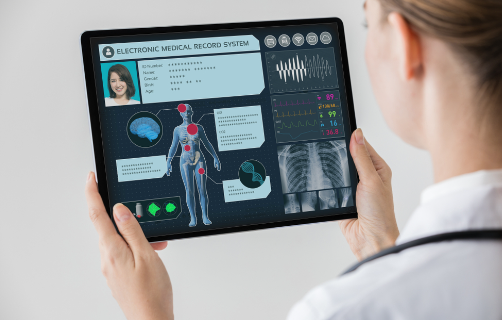
In today’s digital era, healthcare has seen significant advancements with the integration of technology, electronic health records (EHRs), and telemedicine. While these advancements have revolutionized patient care, they have also introduced new challenges, particularly in the realm of cybersecurity. As patient health data becomes one of the most sensitive pieces of personal information, safeguarding it from data incidents or breaches becomes paramount. With data spread across multiple applications and devices, ensuring its safety from threats becomes a complex task. This article delves into the importance of healthcare cybersecurity and best practices that healthcare companies can adopt to bolster their data security and earn patient trust.
The Importance of Healthcare Cybersecurity
Healthcare organizations hold a treasure trove of sensitive information, from medical histories and diagnoses to billing details and personal identifiers. This data is not only valuable to patients but also to cybercriminals looking to exploit vulnerabilities for financial gain or other malicious purposes. A data breach in healthcare can have devastating consequences, ranging from financial losses and legal repercussions to damage to the organization’s reputation and loss of patient trust.
Moreover, with the increasing adoption of IoT devices, wearable health tech, and remote monitoring tools, the attack surface for cyber threats in healthcare has expanded exponentially. This makes it imperative for healthcare organizations to prioritize cybersecurity measures to protect patient data and ensure the continuity of care.
Best Practices for Healthcare Cybersecurity
Implementing robust cybersecurity measures with the assistance of a virtual CIO is crucial for healthcare organizations seeking to reduce risks and secure patient data. Here are some best practices that healthcare companies can adopt to enhance their data security:
- Risk Assessment and Management: Conduct regular risk assessments to identify potential vulnerabilities and threats. Establish a risk management plan to address and mitigate these risks effectively. Prioritize risks based on their potential impact on patient data and implement appropriate controls to manage them.
- Data Encryption: Encrypt sensitive data both at rest and in transit to ensure that it remains unreadable and unusable if intercepted by unauthorized parties. Implement strong encryption algorithms and protocols to protect patient information across all devices and applications.
- Access Control: Implement robust access control measures to ensure that only authorized personnel can access patient data. Use multi-factor authentication (MFA), role-based access controls, and least privilege principles to limit access to sensitive information based on user roles and responsibilities.
- Employee Training and Awareness: Educate employees about cybersecurity best practices, the importance of data protection, and the potential risks associated with cyber threats.
- Patch Management: Regularly update and patch software, applications, and systems to address known vulnerabilities and security flaws. Implement a comprehensive patch management strategy to ensure that all devices and applications are up-to-date with the latest security patches and updates.
- Incident Response Plan: Develop and implement an incident response plan to address data breaches or security incidents effectively. Establish clear procedures and protocols for detecting, reporting, and responding to security incidents in a timely and efficient manner.
Building Patient Trust through Cybersecurity
Building and maintaining patient trust is essential for healthcare organizations, and cybersecurity plays a pivotal role in this endeavor. Patients expect their personal and medical information to be kept confidential and secure. By implementing robust cybersecurity measures and adhering to best practices, healthcare organizations can demonstrate their commitment to protecting patient data and earning their trust.
Furthermore, transparency and communication are key components in building patient trust. Healthcare organizations should be transparent about their cybersecurity practices, policies, and measures taken to protect patient data. Communicating with patients about the steps taken to safeguard their information can go a long way in reassuring them about the organization’s commitment to data security.
Conclusion
Healthcare cybersecurity is a critical aspect of modern healthcare that cannot be ignored. With patient health data being one of the most sensitive pieces of personal information, healthcare organizations must prioritize cybersecurity to protect this valuable asset. By implementing best practices such as risk assessment and management, data encryption, access control, employee training, patch management, and incident response planning, healthcare companies can bolster their data security and earn patient trust.
At Safetica, we understand the importance of data security and the challenges faced by healthcare organizations in protecting sensitive information. Our Data Loss Prevention and Insider Risk Management Solution is designed to detect sensitive data, stop data breaches, and protect companies against insider threats. With Safetica, healthcare organizations can run their operations without the risk of losing valuable intellectual property, personal identifiable information (PII), or other business-critical data. Stay ahead of data security challenges with Safetica and ensure the safety and integrity of patient data in your organization.
Leave a Reply